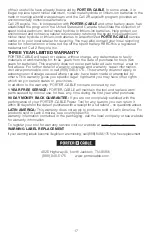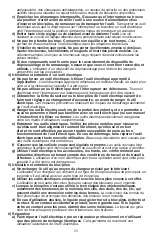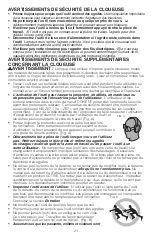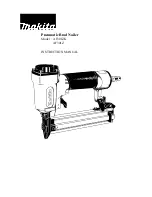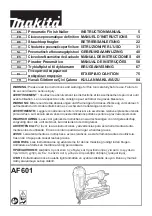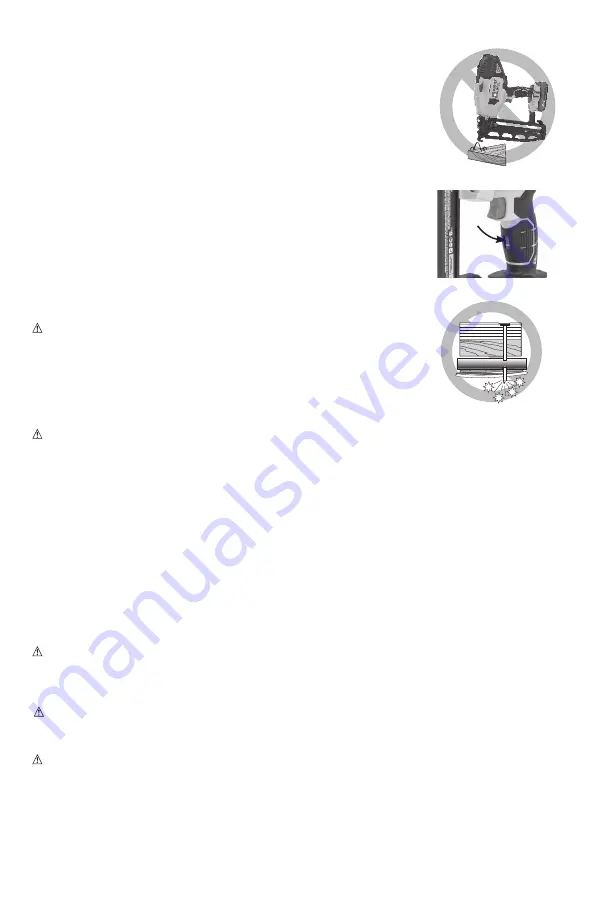
6
•
DEPTH ADJUSTMENT:
To reduce risk of serious injury
from accidental actuation when attempting to adjust depth,
ALWAYS;
• Remove battery pack.
• Engage trigger lock-off (Fig. 12).
• Avoid contact with trigger during adjustments
• Do not drive nails blindly into walls, floors or other work
areas. Fasteners driven into live electrical wires, plumbing,
or other types of obstructions can result in injury. (Fig. 13)
• Stay alert, watch what you are doing and use common sense
when operating a power tool. Do not use tool while tired
or under the influence of drugs, alcohol, or medication. A
moment of inattention while operating power tools may result
in serious personal injury.
• Air vents often cover moving parts and should be avoided.
Loose clothes, jewelry or long hair can be caught in moving
parts.
WARNING:
ALWAYS use safety glasses. Everyday
eyeglasses are NOT safety glasses. Also use face or dust mask
if operation is dusty.
ALWAYS WEAR CERTIFIED SAFETY
EQUIPMENT:
• ANSI Z87.1 eye protection (CAN/CSA Z94.3),
• ANSI S12.6 (S3.19) hearing protection,
• NIOSH/OSHA/MSHA respiratory protection.
WARNING:
Some dust created by power sanding, sawing, grinding, drilling,
and other construction activities contains chemicals known to the State of California
to cause cancer, birth defects or other reproductive harm. Some examples of these
chemicals are:
• lead from lead-based paints,
• crystalline silica from bricks and cement and other masonry products, and
• arsenic and chromium from chemically-treated lumber.
Your risk from these exposures varies, depending on how often you do this type of
work. To reduce your exposure to these chemicals: work in a well ventilated area, and
work with approved safety equipment, such as those dust masks that are specially
designed to filter out microscopic particles.
• Avoid prolonged contact with dust from power sanding, sawing, grinding, drilling,
and other construction activities. Wear protective clothing and wash exposed areas
with soap and water. Allowing dust to get into your mouth, eyes, or lay on the skin
may promote absorption of harmful chemicals.
WARNING:
Use of this tool can generate and/or disperse dust, which may
cause serious and permanent respiratory or other injury. Always use NIOSH/OSHA
approved respiratory protection appropriate for the dust exposure. Direct particles
away from face and body.
WARNING:
Always wear proper personal hearing protection that conforms to
ANSI S12.6 (S3.19) during use. Under some conditions and duration of use, noise
from this product may contribute to hearing loss.
CAUTION:
When not in use, place tool on its side on a stable surface where
it will not cause a tripping or falling hazard. Some tools with large battery packs will
stand upright on the battery pack but may be easily knocked over.
FIG. 11
FIG. 12
FIG. M

















